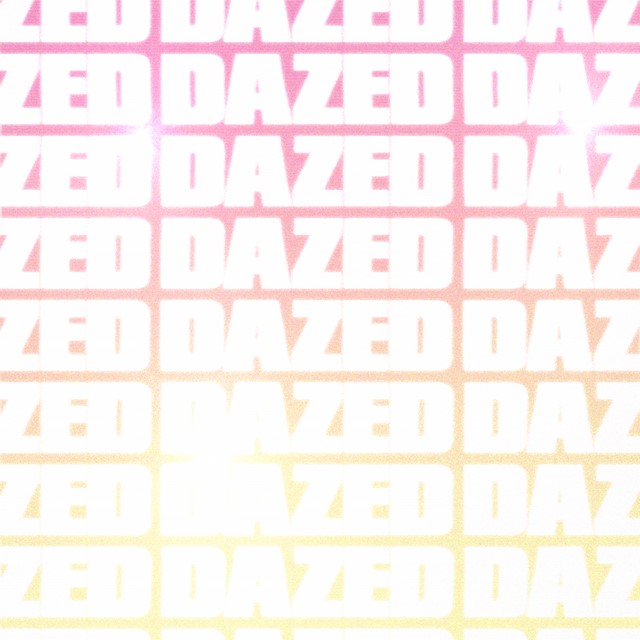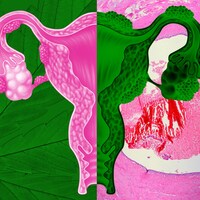A little bit mullet, a little bit hime: we take a deep dive investigation into the countercultural hairstyle
- THE LOOK: A multi-layered blunt but sleek style. The top layers of hair are cut into a 360-degree bob, whilst the under layer at the nape of the neck is left long creating the silhouette of a jellyfish
- WHO’S DOING IT? Nicole Kidman brought attention to the look on the cover of Perfect Magazine, but it has been a popular countercultural style in Tokyo, London and Taiwan for a lot longer
- HOW CAN I GET IT? If you are in London, head over to Keisuke Watari. There’s also the hair salon OOO-ing Studio in Taichung, Taiwan, or the hair designer RAKUTO in Tokyo. Alternately, bring a lot of inspo pics to your local salon
The 2020s have already seen the revival of the mullet, the shag and the hime cut. Now, jellyfish hair is making waves on the internet.
The style became a trending topic last week when Nicole Kidman experimented with the look in her cover shoot for Perfect Magazine. Courtesy of Evanie Frausto, the actress wore an auburn wig cut into short layers to frame her face at the front, with long straight hair descending down her back. The look is similar to last year’s hime cut worn by musicians like Blackpink’s Lisa and the Haim sisters. The style originated during the ancient Heian period in Japan and has since been replicated throughout modern Japanese culture. Whilst hime haircuts are identified by the two short sections cut in front of the ears, the more avant-garde jellyfish cut marks the full spectrum of mullet evolution.
To create the jellyfish style, the top layers of hair are cut into a 360-degree bob, whilst the under layer at the nape of the neck is left long. The combination of the two lengths mimics the silhouette of a jellyfish, with its rounded head and flowing tentacles. It gives off an “I don’t care what you think” vibe, celebrity hairstylist Frédéric Fekkai explains. “It’s almost punk in a sense, and is an artistic version of a mullet reminiscent of Vidal Sassoon’s daring and bold asymmetrical hairstyles.”
We often see shifts towards bolder beauty trends after critical historical events, and post-pandemic is no different. After nearly two years in lockdown away from the hair salons, we’re craving creativity, rejecting uniformity and embracing a DIY aesthetic. The jellyfish haircut draws on a range of references to encapsulate our current beauty culture – pulling from the past whilst still being very much of the present. It takes the punk attitude of the 80s mullet, the carefree chaos of the 70s shag and the creativity of early 00s scene hair – raccoon or skunk colouring are often a part of the look. These elements of our historical beauty language translate to a style that speaks to political disillusion, rebellion against conformity and a continuation of early internet experiments in self-expression.
“The Jellyfish hairstyle was popular in the 00s in Taiwan,” says hair salon OOO-ing Studio, home to stylists such as Wesley, May and Light whose interpretations of the style have gained thousands of likes online. “Now, in the age of the internet, we can take inspiration from the pop culture of the past and fuse it with modernity to extend our creative concepts. It creates room for play in hair styling, and jellyfish hair shows just one of the possibilities this era can bring to the world.”
Much like the Hime cut, the jellyfish hair trend is also a product of our increasing globalisation. “It shows us that the boundaries between East Asian and Western hair trends are dissipating,” says hairstylist Keisuke. “This trend is all-encompassing, resonating with people around the world.”
As we live our lives increasingly online, we’re becoming more drawn to these unconventional styles in order to make our digital selves more visible in a supersaturated space, and we’re only getting more creative as we strive to express our individuality. Tokyo hair designer RAKUTO describes jellyfish hair as “countercultural”. An extension of the weird girl aesthetic, the jellyfish cut provides an antidote to the perfectionism of the airwrapped clean girl look, and the hyper-feminine beauty ideals of Pinterest plaits or IG baddie extensions. It represents a wider move away from binary beauty ideals and towards a more gender-fluid approach to self-styling; a rejection of homogeneity and carbon copy influencer culture. Even the hate comments directed at this style provide insight into the culture it rallies against. “This looks like bad hair extensions someone has tried to apply themselves”, says one online comment. But perhaps that’s part of the appeal? Whilst some images of the style going viral have been skillfully created by professionals, many of those embracing the cut are taking a DIY approach.
“I cut and dyed it myself, so it’s not perfect!” says TikTok user Mari Trombley (@sillyyerba) whose videos feature most prominently in the jellyfish hairstyle’s 1.6 billion views on the platform. Jellyfish hair can be a reclamation of imperfection and the prescriptive ideals of femininity, giving the wearer the best of both worlds (long and short hair) whilst providing a plethora of ways to style. Trombley posts the many ways she wears her jellyfish hair, from braiding the long strands into stars, creating loose pigtails or clipping all of her hair back into a claw clip. Many of these videos cite anime characters such as Yuna from Final Fantasy as the inspiration for the style, demonstrating our increasing perception of our IRL and URL selves as characters ready for crafting.




